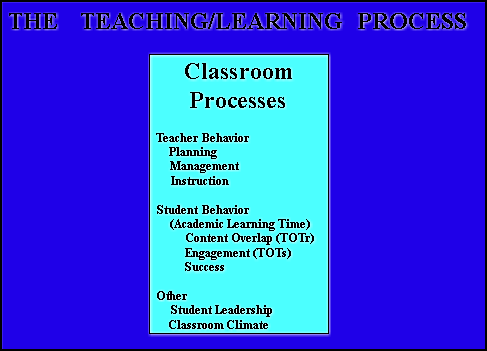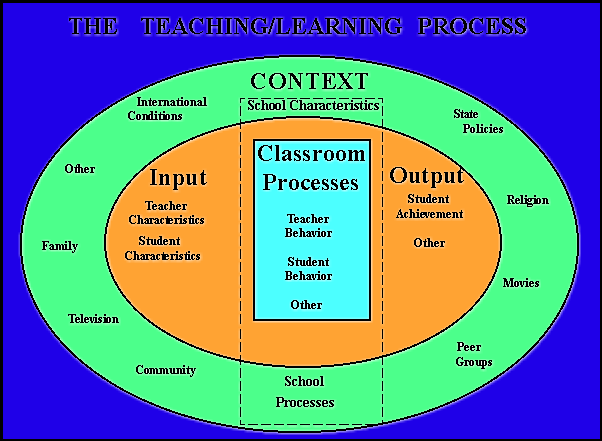
Citation: Huitt, W. (2000). Slavin's QAIT model. Educational Psychology Interactive. Valdosta, GA: Valdosta State University. Retrieved from http://www.edpsycinteractive.org/topics/process/QAIT.html
Return to | EdPsyc Interactive |
Robert Slavin's QAIT model is a revision of John Carroll's model of school learning. In the QAIT model shown in the Slavin (1997) text, he eliminated those elements that were not under the control of educators and kept or redefined elements those elements that could be altered or modified by teachers. According to Slavin, all of the elements must be present if classroom learning is to be effective.
This version of Slavin's QAIT model can be contrasted with the Classroom Processes section of Huitt's (1997) model of the teaching/learning process. The latter is a slight adaptation of the Dimensions of Classroom Effectiveness developed by Squires, Huitt, and Segars (1983). The major difference between Slavin's and Huitt's classroom models is that Slavin has redefined the important variables in John Carroll's model into Teacher Classroom Behavior variables. By doing this Slavin has emphasized the importance of the classroom teacher in arranging the conditions that will optimize student learning. However, he has simultaneously eliminated student classroom behavior as an influence on teacher behavior.

Huitt's view of important classroom processes emphasizes the interaction between teachers and students. In this model the subcategories of teacher behavior (planning, management and instruction) are viewed as groupings of classroom practice that affect student behavior, especially Academic Learning Time. However, teacher behavior is, in turn, influenced by student classroom behavior (the most important being content overlap, involvement and success) which produces the transactional cycle that is the focus of the teaching/learning process. From this perspective, both teachers and students are responsible for classroom learning. Teachers are responsible for arranging conditions and students are responsible for paying attention and striving for success.
It should be noted that Huitt has included planning (getting ready for classroom activity) and management (getting control of the classroom) as specific categories of variables that are only implicitly addressed in both the Carroll and Slavin models. This allows the full range of teacher classroom behavior to be included and discussed in the model.
A more complete version of Slavin's model is shown in the following diagram (Slavin, 1995).

Notice that in this version of the model, Slavin includes student characteristics as an important part of the teaching/learning process. He also adopts the concept of intermediate outcomes as advocated by Cruickshank (1985). However, he considers student achievement as measured by standardized tests as the only measure of student outcomes of schooling.
While Slavin's expanded QAIT model includes student characteristics and student classroom behaviors, these are not shown to influence teacher classroom behavior. In addition, Slavin still does not consider teacher inputs such as Teacher Efficacy as an important category of variables to consider. He includes Content Overlap as a component of Quality Instruction, but does not highlight it as a separate intermediary outcome measure. In addition, he completely omits any reference to context variables such as school characteristics or processes.

In summary, Slavin's (1995) expanded QAIT model is quite similar to Carroll's (1963) model in that it considers how student characteristics, teacher behavior, and student behavior impact school learning as measured by standardized achievement tests of basic skills. There is nothing in these two models that are not included in Huitt's (1997) model of the teaching/learning process. However, Huitt's model considers measures of school learning beyond those of standardized tests of basic skills, teacher characteristics such as teacher efficacy, and context factors such as school characteristics and processes and home environment.
References:
Return to: